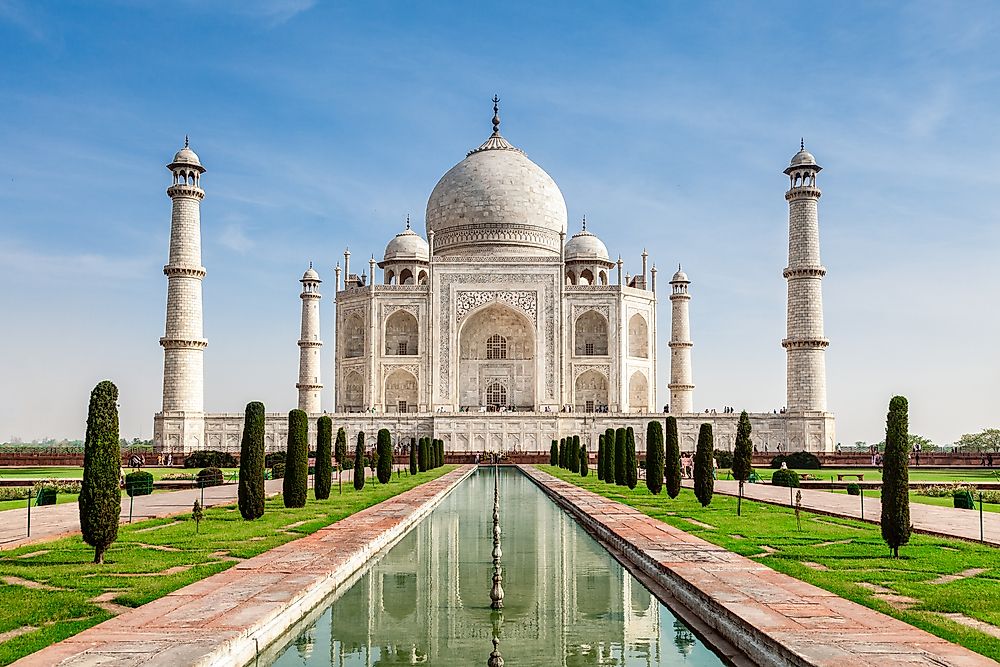The Most Famous Examples Of Funerary Art In The World

Funerary art refers to various forms of art that are formed or placed in a repository for the dead. The repository might be referred to as a tomb or a grave. The art may include sculptures, the shape of the grave, or grave goods. Grave goods refer to items placed in a grave other than the remains of the deceased. Grave goods can either be the material possessions of the dead, cultural objects associated burial rituals, or miniature objects that the living thinks the dead need in the afterlife. Funerary art symbolizes cultural functions, but in general, they are meant to express the community’s beliefs in life after death. It also symbolizes the mortality of humankind and cultural values. In some communities’ funerary art was used to appease the spirits and prevent the dead from interfering with the activities of the living. The art can be traced to about 100,000 years ago and was practiced across several cultures including the Hindu, Chinese, Africans, Muslims, and Egyptians.
8. Egyptian Pyramids
The monumental pyramids of Egypt are the most renowned tombs in the world. The first forms of pyramids in Egypt were rectangular structures made of either brick or mud. They were built on graves during Egypt’s First Dynasty. The first of today’s pyramid was built by the pharaoh of the Third Dynasty. However, the three famous pyramids were built in the fourth dynasty for pharaohs Khufu, Khafre, and Menkaure. They are tombs for the royal mummies and were built to protect the kings in the afterlife. The Great Pyramid of Giza is a tomb for Pharaoh Khufu and his queen.
7. Taj Mahal
The Taj Mahal sits on the Bank of the Yamuna River on the 17-hectare Mughal garden in Agra District, India. The construction of the Taj Mahal was sanctioned by Emperor Shah Jahan. It was meant to commemorate his wife, Mumtaz Mahal. The building was constructed between 1632 and 1648 AD. Further improvements were made to the building until 1653 AD. The tomb of the queen is the centerpiece of the Taj Mahal which includes a guest house and a mosque. The building further represents the Muslim art in India, and for that reason, it was designated a UNESCO World Heritage Site
6. Terracotta Army
The Terracotta Army refers to a collection of the terracotta sculptures that were buried alongside the Chinese first emperor Qin Shi Huang between 210–209 BCE. The funerary art was made of clay and took the form of warriors, chariots, and horses. The discovery was made in 1974 by local farmers. Chinese authorities estimate that there were 8,000 soldiers, 520 horses, and over 130 chariots. A majority of the funerary art remain buried close to the nearby Qin Shi Huang's mausoleum. Other non-military figures found in the pit include musicians, strongmen, acrobat’s government official. They were all meant to accompany the emperor in the afterlife, protect him, and ensure that he remained comfortable.
5. Mausoleum at Halicarnassus
The Mausoleum at Halicarnassus is also known as the Tomb of Mausolus. It was built from 353 to 350 BC in Halicarnassus in present-day Turkey. The mausoleum was built for Mausolous, a governor in the vast Persian Empire, and Artemisia II of Caria; his sister-wife. The mausoleum had a height of 148 feet and its sides filled with sculptural relief. Each of the four sides was sculptured by a different Greek sculpture. It was destroyed by earthquakes between the 12th and 15th centuries.
4. Sutton Hoo
Sutton Hoo in Suffolk, England hosts two 6th and 7th centuries cemeteries. One of the cemeteries contained a ship-burial with several Anglo-Saxon relics most of which were relocated to the British Museum. The area is protected by the National Trust because it is considered a national treasure that sheds light on English history. The ship-burial dates back to the early 7th century and is one of the most significant archeological findings in England because of its size, quality, and contents. Among the items discovered in the burial chamber include a metalwork suite, golds and gems fittings, ceremonial helmet, sword and shield, and several silver plates.
3. Turbe of Roxelana
The term “Turbe” translates to “tomb” in Turkish. The Turbe of Roxelana” Tomb of Roxelana” is a mausoleum in Turkey built for Hurrem Sultan (Roxelana); the wife of Ottoman Sultan Süleyman the Magnificent. The tomb is dome-shaped and located at the Süleymaniye Complex at the Turkish largest city, Istanbul. Adjacent to the Turbe of Roxelana is the Süleymaniye Mosque; the resting place of Sultan Süleyman.
2. Humayun's Tomb
The Humayun’s tomb was built for Mughal Emperor Humayun and commissioned by his wife Empress Bega Begum in 1569-1570. It lies in the city of Delhi in India. The tomb was the first garden-tomb to be constructed in India. It was declared a UNESCO heritage site in 1993. The tomb lies in a complex that also includes the graves of Empress
1. Sarcophagus of Junius Bassus
The Sarcophagus of Junius Bassus holds the remains of Junius Bassus who died in the mid-4th century. The sarcophagus was discovered under the Old St. Peter's Basilica in the late 16th century but was moved to the Museo Storico del Tesoro della Basilica di San Pietro in the Vatican. The Dogmatic sarcophagus lies alongside the Sarcophagus of Junius Bassus at the museum, and together form the earliest Christian carvings.











